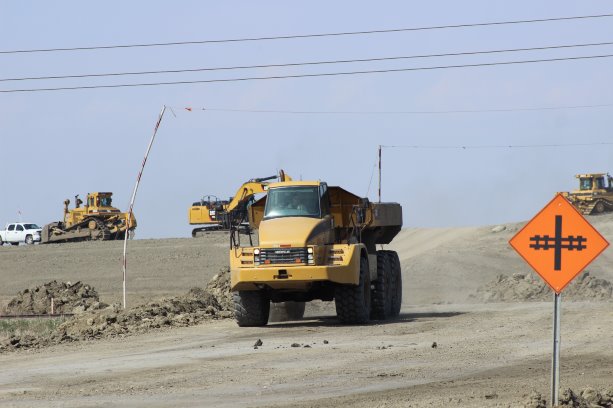The first phase of Saskatchewan’s massive Regina Bypass project has been completed.
The section, which is between Balgonie and Highway 33, will help divert large truck traffic around the city and reduce congestion. It is the largest infrastructure project in the province’s history.
The public-private partnership project includes Graham Construction, Parsons Canada Ltd., Carmacks Enterprises and Vinci Canada.
The first phase, which took two years to complete, included new overpasses at Balgonie, White City and Tower Road. It also included new south and east service roads from Highway 33 to Pilot Butte, north service roads from Pilot Butte to Balgonie and south service roads from Pilot Butte to Balgonie. The Pilot Butte interchange will be complete in 2018.
Phase one manager Josh Binkley explained the first portion of the bypass has been a huge undertaking, utilizing more than 50 superintendents and managers. Roughly 20 kilometres of new road structures had to be built as well as nine bridges. Crews also paved dozens of kilometres of service roads and nearly four million cubic metres of earth was moved.
Binkley explained one of the biggest challenges was dealing with the local soil conditions.
"You truly don’t know what you have until you start building," he said. "Soils are very challenging here, it’s like gumbo."
Crews had to dig hundreds of feet through clay to find suitable aggregate.
"We literally had to dig small mines to find this aggregate," he said, adding local communities and suppliers were a huge help in making sure all of the material came from the province.
Crews were also able to reduce the amount of new aggregate needed by using a method fairly new for the province called full depth reclamation (FDR). The process rebuilds worn out asphalt pavements by recycling the existing roadway. Old asphalt and base materials are pulverized using a specialized machine called a reclaimer. On top of the pulverized material, water is added to reach the optimal moisture content for compaction and then a variety of materials, such as dry cement, lime, fly ash or asphalt emulsion are incorporated for stabilization. A reclaimer is used again to mix all the materials. After shaping and grading, the new base is compacted to produce a base for either an asphalt or concrete surface.
Binkley said this was not only beneficial to the project, but was an opportunity for young engineers to gain experience with the technique for the future.
"We want to pave the way in setting the standard going forward," Binkley said. "Not only is it cost effective, it is reusing what is already there. I think we have opened of a lot of eyes to a new way of doing things in the province."
Crews were not only able to finish phase one ahead of schedule, the team was also able to get a head start on several phase two projects. Binkley noted the team was lucky to have a long, dry summer which aided in getting work done.
"We are well advanced and a year ahead on one of our bridge structures," said Binkley, adding the team can also apply what they have learned working with local suppliers and work that into their plan for phase two.
Binkley said one of the things he and the project’s partners are most proud of is the safety record so far. During the three million man hours used so far, there have been zero lost time incidents.
"That was a challenge for us," said Binkley. "With so many people there is a big risk, but we were able to implement our safety management system and hold that culture for years with no major incidents."
Binkley said he and others on the team are proud to be involved in a project that will make driving safer for the community.
"It’s pretty rewarding to be part of the project," he said. "It’s a feather in the cap for Saskatchewan and I am r, there have been zero losthreeeteproud to be part of it."



Recent Comments
comments for this post are closed